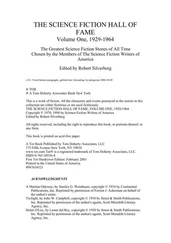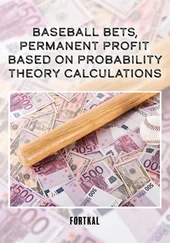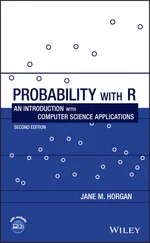Following is a synopsis of the book's 11 chapters.
Chapter 1begins with basics and general principles: random experiment, sample space, and event. Probability functions are defined and important properties derived. Counting, including the multiplication principle, permutations, and combinations (binomial coefficients) are introduced in the context of equally likely outcomes. A first look at simulation gives accessible examples of simulating several of the probability calculations from the chapter.
Chapter 2emphasizes conditional probability, along with the law of total probability and Bayes formula. There is substantial discussion of the birthday problem. It closes with a discussion of independence.
Random variables are the focus of Chapter 3. The most important discrete distributions—binomial, Poisson, and uniform—are introduced early and serve as a regular source of examples for the concepts to come.
Chapter 4contains extensive material on discrete random variables, including expectation, functions of random variables, and variance. Joint discrete distributions are introduced. Properties of expectation, such as linearity, are presented, as well as the method of indicator functions. Covariance and correlation are first introduced here.
Chapter 5highlights several families of discrete distributions: geometric, negative binomial, hypergeometric, multinomial, and Benford's law. Moment-generating functions are introduced to explore relationships between some distributions.
Continuous probability begins with Chapter 6. Expectation, variance, and joint distributions are explored in the continuous setting. The chapter introduces the uniform and exponential distributions.
Chapter 7highlights several important continuous distributions starting with the normal distribution. There is substantial material on the Poisson process, constructing the process by means of probabilistic arguments from i.i.d. exponential inter-arrival times. The gamma and beta distributions are presented. There is also a section on the Pareto distribution with discussion of power law and scale invariant distributions. Moment-generating functions are used again to illustrate relationships between some distributions.
Chapter 8examines methods for finding densities of functions of random variables. This includes maximums, minimums, and sums of independent random variables (via the convolution formula). Transformations of two or more random variables are presented next. Finally, there is material on geometric probability.
Chapter 9is devoted to conditional distributions, both in the discrete and continuous settings. Conditional expectation and variance are emphasized as well as computing probabilities by conditioning. The bivariate normal is introduced here to illustrate many of the conditional properties.
The important limit theorems of probability—law of large numbers and central limit theorem—are the topics of Chapter 10. Applications of the strong law of large numbers are included via the method of moments and Monte Carlo integration. Moment-generating functions are used to prove the central limit theorem.
Chapter 11has optional material for supplementary discussion and/or projects. These three sections center on random walks on graphs and Markov chains, culminating in an introduction to Markov chain Monte Carlo. The treatment does not assume linear algebra and is meant as a broad strokes introduction.
There is more than enough material in this book for a one-semester course. The range of topics allows much latitude for the instructor. We feel that essential material for a first course would include Chapters 1– 4, 6, and parts of Chapters 7, 9, and 10.
The second edition adds learning outcomes for each chapter, the Rsupplements, and many of the chapter review exercises, as well as fixes many typos from the first edition (in both the text and the solutions).
Additional features of the book include the following:
Over 200 examples throughout the text and some 800 end-of-chapter exercises. Includes short numerical solutions for most odd-numbered exercises.
Learning outcomes at the start of each chapter provide information for instructors and students. The learning outcome with a (C) is a computational learning outcome.
End-of-chapter summaries highlight the main ideas and results from each chapter for easy access.
Chapter review exercises, which are provided online, offer a good source of additional problems for students preparing for midterm and/or final exams.
Starred subsections are optional and contain more challenging material and may assume a higher mathematical level.
The R supplements (available online) contain the book code and scripts with enhanced discussion, additional examples, and questions for practice for interested students and instructors.
The introductory R supplement introduces students to the basics of R. (Enhanced version of first edition Appendix A, available online as part of the R supplements.)
A website containing relevant material (including the R supplements, script files, and chapter review exercises) and errata has been established. The URL is www.wiley.com/go/wagaman/probability2e.
An instructor's solutions manual with detailed solutions to all the exercises is available for instructors who teach from this book.
Amy
Amherst, MA
September 2020
From Amy for the second edition:
We are indebted to many individuals who supported the work of creating a second edition of this text. First, we thank Bob, for his thoughts and encouragement when we inquired about revising the text. We also thank our student interns, especially Sabir and Tyler, for their hard work reviewing the text, working on the new supplements, and typing solutions for exercises. The students were generously supported by funding from Amherst College. We also thank our colleagues Nick Horton and Tanya Leise for helpful discussions of the first edition.
Wiley's staff supported us well during the revision, especially Kimberly Monroe-Hill, who had very helpful suggestions. We would also like to thank Mindy Okura-Marszycki, Kathleen Santoloci, and Linda Christina, for their support getting the project off the ground.
From Bob for the first edition:
We are indebted to friends and colleagues who encouraged and supported this project. The students of my Fall 2012 Probability class were real troopers for using an early manuscript that had an embarrassing number of typos and mistakes and offering a volume of excellent advice. We also thank Marty Erickson, Jack Goldfeather, Matthew Rathkey, WenliRui, and Zach Wood-Doughty. Professor Laura Chihara field-tested an early version of the text in her class and has made many helpful suggestions. Thank you to Jack O'Brien at Bowdoin College for a detailed reading of the manuscript and for many suggestions that led to numerous improvements.
Carleton College and the Department of Mathematics were enormously supportive, and I am grateful for a college grant and additional funding that supported this work. Thank you to Mike Tie, the Department's Technical Director, and Sue Jandro, the Department's Administrative Assistant, for help throughout the past year.
The staff at Wiley, including Steve Quigley, Amy Hendrickson, and Sari Friedman, provided encouragement and valuable assistance in preparing this book.
ABOUT THE COMPANION WEBSITE
This book is accompanied by a companion website:
www.wiley.com/go/wagaman/probability2e

The book companion site is split into:
Читать дальше













